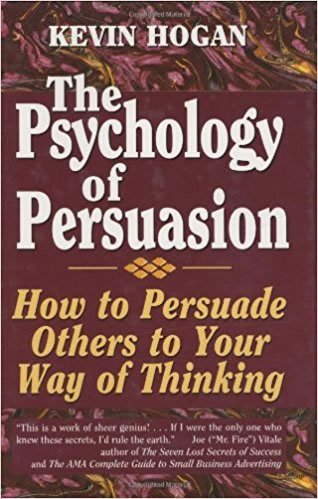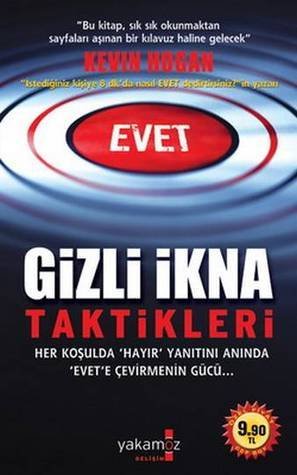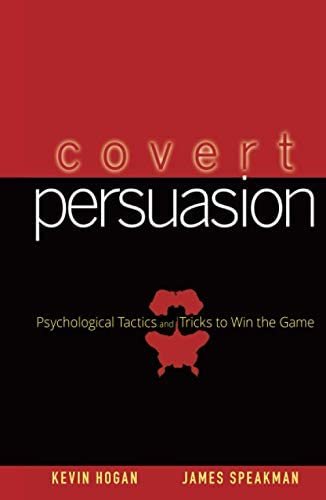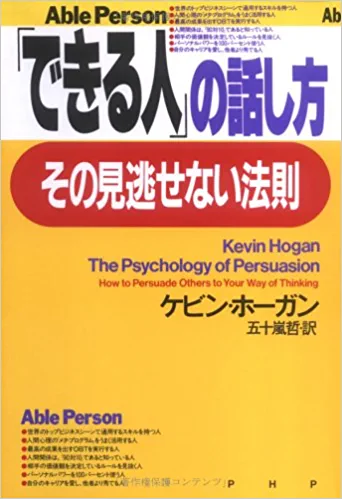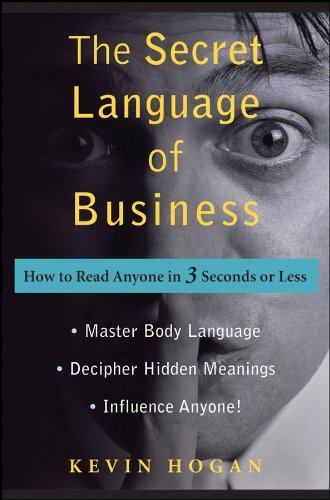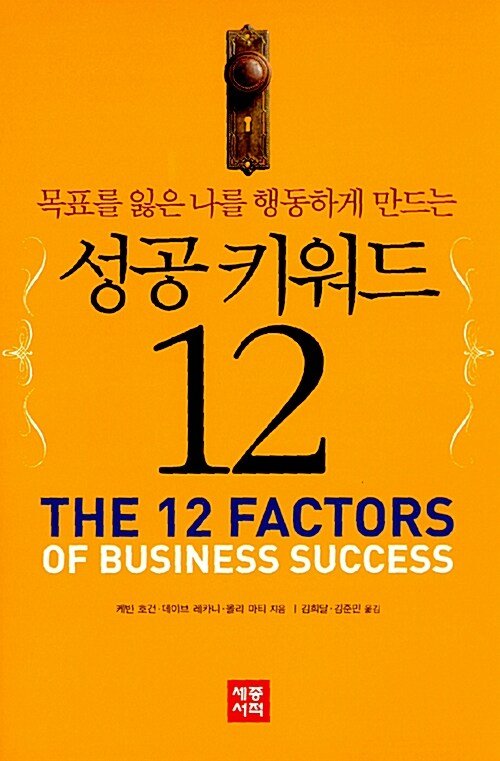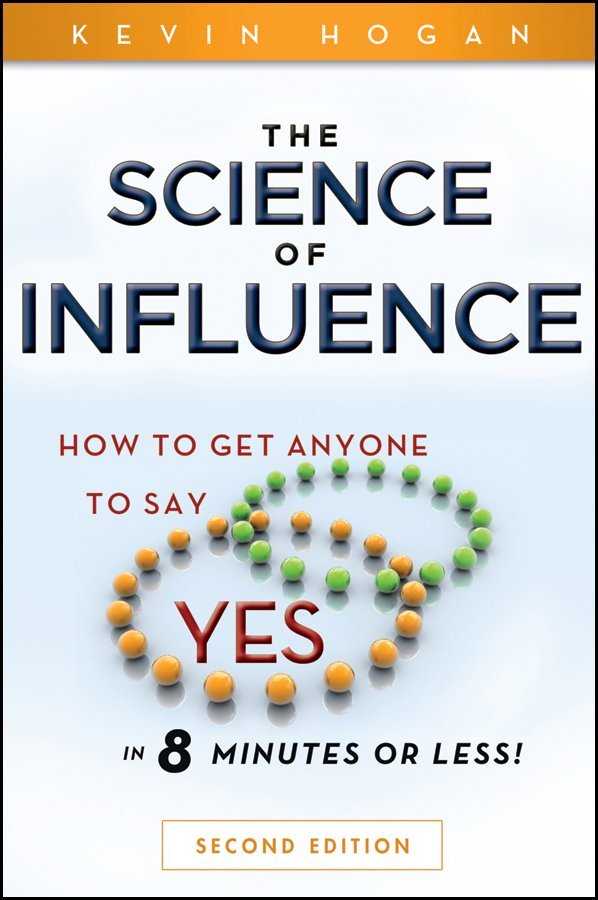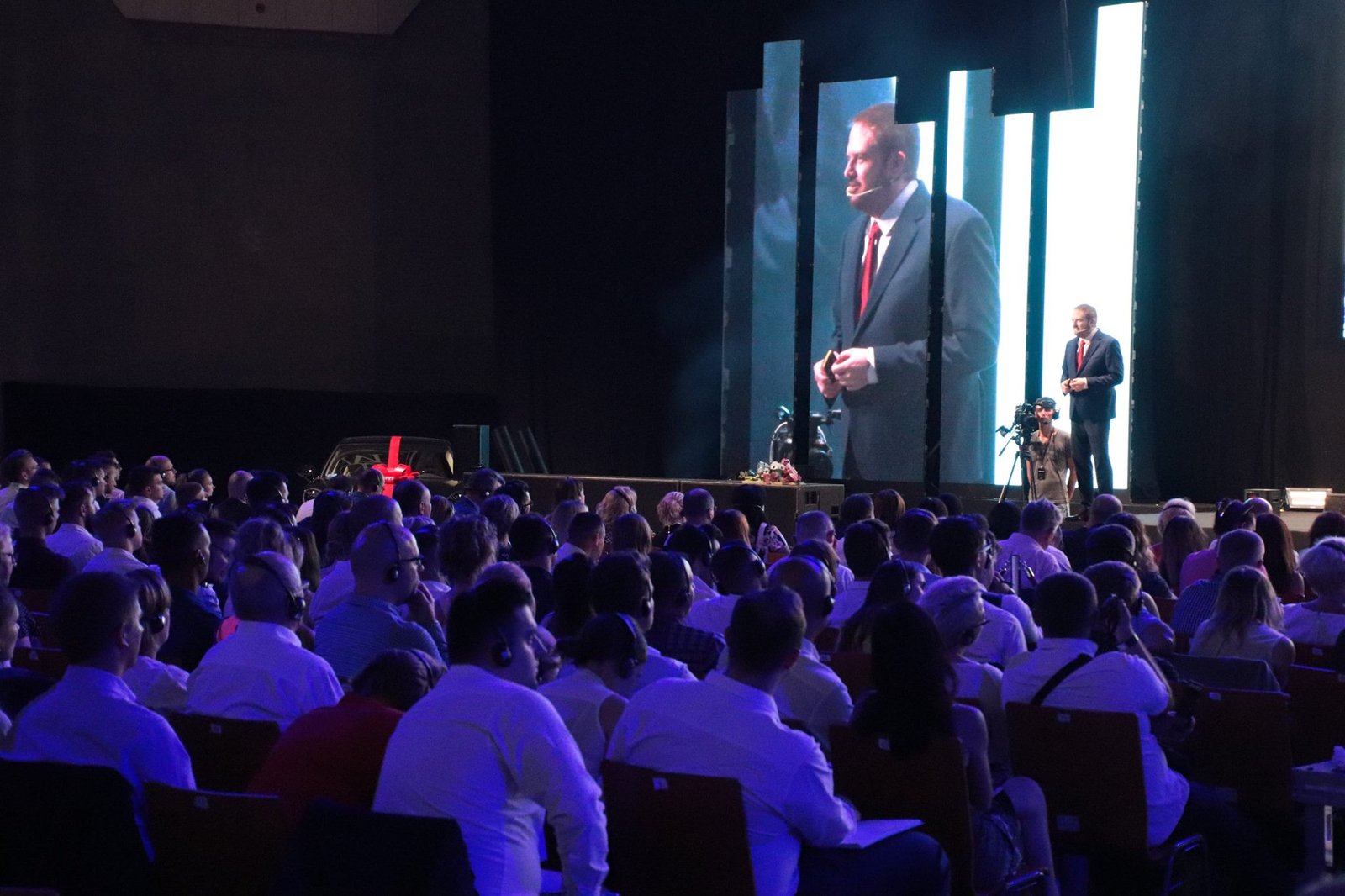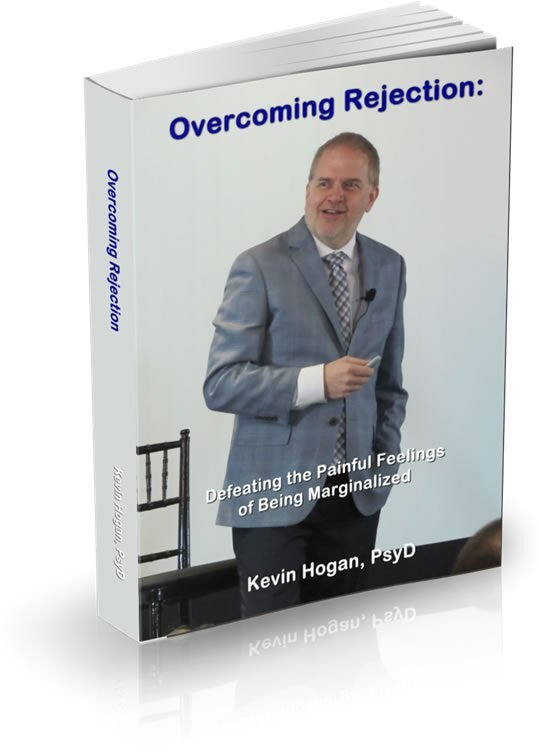You CAN do a better job at reading the body language of deception.
But you can also destroy or dramatically screw up all you hope to gain by looking for the deception. Here’s what I mean. A decade ago, I spoke with a former student who was working with the government. I’ll just leave that at that. He’s probably reading this today. He asked me if I’d be up for training airport employees to read the body language of people going through security at airports.
 This was before TSA became the mess it is today.
This was before TSA became the mess it is today.
It was a great idea until about our third conversation when he asked me, “OK now, let’s say a guy is part of a plan to do some damage on a given day. He’s going through security. What signs of nervousness, fear or anxiety should we be looking for? What don’t I know?”
Now, “M” is one sharp guy. He’s worked for intelligence. He must know with near certainty that there is no answer to this question. He also knows that someone somewhere is going to get a BIG CONTRACT for this kind of a consulting project. He’s gotta be praying I have a satisfactory answer. Smart people always ask, “What don’t I know.” That’s how they get to be smart…and “M” is the most logical, rational, clear minded thinker I know.
I was about to really disappoint him and pull millions of dollars out of our pockets and put them into someone else’s pockets who would tell the government something I wouldn’t.
Reading the body language of people walking through security is no problem. The government wasn’t looking for that information however. They wanted something that is not possible in 2014.
The very notion of trying to discover who is potentially part of a terrorist plot (for example) or trying to get a read on someone “dangerous” is simply not possible. Yes of course there are successful stereotyping typologies that show increased probability of certain populations over other populations…certain demographics over other demographics.
Here’s the fact: There is no predictable or identifiable “body language of people who are going to blow things up today.”
It doesn’t exist.
Here’s the short story why.
In order to try and quantify this “body language” and connect it to serious “danger” the coder would require having video of the bad guys entering security in about 200 consecutive 9/11’s from around the world and then contrasting their coded behaviors with hundreds of other people entering security at the same time, in the same locations (next in line) and then differentiating between the two sets of coded behaviors in a couple of hundred people.
THEN, you would need the coded behavior of the 200 bad guys at security and contrast their body language with their own previously coded entry into other secure locations like a football game or a concert where they did NOT do something dangerous.
In other words you have to distinguish their dangerous cues from their non-dangerous cues and then you have to contrast that with norms.
I’m not saying it is 100% impossible.
It simply isn’t going to happen in your lifetime or mine.
The FIRST piece of information YOU need to UNDERSTAND in analyzing the BODY LANGUAGE OF DECEPTION is that you must NOT think like a government. Otherwise you’ll screw up relationships the way governments waste incredible sums of money hiring bogus “experts”…
Body Language Varies Significantly Among Contexts, Environments, Populations and Demographics
You and I rightfully want to know if “they” are deceiving us.
The problem we instantly face is that nonverbal communication varies dramatically among people from different walks of life, different income groups, different statuses and levels of power in different situations.
Many in the government then and even today believe that there are body language signals that people will exhibit as they go through security that will point to those who are going to try to do large scale harm to innocent people.
Interesting idea. Just zero evidence for such a notion.
In the real world, there is a lot you can do to help yourself wade through the mixed messages we all receive from others, every single day.
Deception is the normal state of human behavior.
In almost every communication you have, there are many elements of deception.
It’s a simple fact.
Scenarios?
- The other person is deceiving you to hurt you.
- The other person is deceiving you to help you.
- The other person is deceiving you for reasons other than helping and hurting.
- The other person is deceiving themselves.
- And you are doing the same four things that everyone else is doing.
The degree to which it is “bad” or “good” is variable, of course.
Deception simply means someone is cloaking their true feelings about something.
Before you learn some cues you have to know WHAT you are looking for and WHY you want to get certain pieces of valuable information.
Deception is a necessity when living with humans in society. It’s behavior that covers reality.
Here are examples of deception.
- Parents tell their children there is a Santa Claus that brings them presents.
- People tell others they “look great” when they really look terrible.
- “It’s so nice to see you!” The person is really thinking, “I don’t have time for this today.”
- “We’ll be there at the wedding.” They know they have no intention of coming.
- “I tried really hard, but I couldn’t do it.” They never even started.

- “You were great in the concert.” They were off key the entire time.
- “I love your art.” They hate it.
- “The food is wonderful.” It’s terrible.
Log Your Lies
Take a day or two and observe what you communicate and keep a log for just ONE hour where you have a conversation with others. Note what you said that wasn’t absolutely true right next to what you really thought or felt.
You’ll be disturbed to discover that you deceive for one reason or another about 12 times per hour.
Of those 12 times per hour, a sharp mind who has objective coding of your behavior can calibrate to about 2/3 of those deceptions.
There is a problem.
They will also identify a significant number of false positives. That’s where the person you are communicating is basically shouting with their body, “I’m lying to you right now!”
Except they are not.
Therefore, realize that as you become more skilled in detecting deception you also find more false positives.
Humans, in general, are experts at deception in low to medium-risk scenarios. Humans can estimate when someone is lying with some degree of accuracy. Let’s say “half the time.” (Defining this is in itself the subject of an article.)
However, most humans aren’t very good at deceiving OR recognizing deception, when the stakes are high. The fact is most people aren’t in situations where deception occurs with a great deal on the line.
This simply means that because the sample size of your experience with high stakes lying is relatively small compared to your sample size of people lying to you about “little stuff” …you aren’t going to be as tuned into detecting deception in high stakes.
You aren’t alone.
All of the examples I listed above are “low stakes deception.” These are deceptions that generally don’t have huge ramifications if you are found out to be deceiving.
And these are the kinds of experiences where you and I almost intuitively “know” when someone is being straight with us or not.
Then things get more difficult as the stakes rise.
If someone is accused of a crime, their behavior becomes VERY DIFFICULT to read.
Police read the behavior of those accused of a crime with LESS SUCCESS than non-law enforcement officers for the simple reason that police are looking for information to fill a story line they have generated. They need evidence to fit.
The scientist, the thinker, the objective observer is only interested in what reality is.
It’s VERY DIFFICULT for people to separate their need to FILL A STORY when they MUST be discovering reality.
Imagine a guy received a text on his cell phone from girlfriend #2 and girlfriend #1 sees that text. Now this is a relatively high stakes deception activity that is about to occur.
It’s not because he is guilty or innocent, it’s because of what is at stake if he is perceived as lying vs. telling the truth.
Perhaps a bigger stake is the guy who got picked up by the cops for robbing the store. This guy faces jail if he is perceived as guilty. The police officer does not have a significant stake in the situation.
Whether the individual is innocent or guilty doesn’t matter. Both innocent and guilty must deceive, and the reason law enforcement is so poor at detecting deception is because they only see people in specific contexts where deception is quite predictable.
The problem is innocent people and guilty people tend to act remarkably similarly in “official settings” like a police department or in court. You want to see deceptive behavior? Try being vetted for a jury sometime and observe all the deception that happens there!
Context matters more than innocence or guilt.
Most body language “experts” don’t know you are learning here, so they pretty much tell the media what the media wants to hear. “She did it.”
The fact is that when I look at cues, I filter out cues that will be the same from those who are deceiving whether they did something bad or not. Then you look at those cues which are most likely to help you out in analyzing the situation.
Factors of Body Language Analysis
- The context is the most important factor in body language and nonverbal communication. Context is location, environment, crowding, group or other expectations.
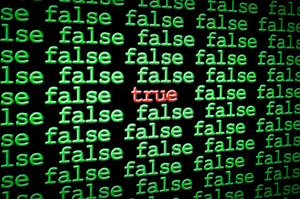
- Lying is not cut and dried. You can lie and tell the truth in the same sentence. A lie is rarely 100% a lie. And the truth is rarely 100% the truth. In other words, rarely is lying, “light switch on” or “light switch off.”
- Behavior in the context of deception can run the gamut from “low stakes,” where nothing significant happens by having a lie revealed, to “high stakes,” where the earth will quake and hell will pay when the lie (or a perception of a lie) is made public.
The manifestation of low stakes deception in someone’s body language, in general, is very different than someone’s body language in a high stakes situation.
With all of the above in mind…
When A President Deceives
 People still ask me about how I knew President Clinton did indeed have an affair with an office intern, now 16 years ago.
People still ask me about how I knew President Clinton did indeed have an affair with an office intern, now 16 years ago.
Fewer people remember the apology speech he made much later, after the initial denial. THAT short speech was one of the most fascinating from a body language perspective that I’ve ever seen.
The media put me on the spot by asking for specifics about where the President was telling the truth and where he wasn’t.
It’s a fascinating thing when a President can spend trillions of future dollars, put a nation into a self-destruct sequence and no one cares whether they are telling the truth or not. Instead, the attention always falls to the gossip of life. It is a statement about human behavior and how people prioritize.
There are several cues I am immediately interested in when analyzing deception.
Deception Cues
- I look at facial and hand color change.
- I look at posture changes.
- I look at position of feet.
- I look at the muscular shifts in the face.
- There are several other immediate cues, of which one is “Eye Blinking.”
Watching hundreds of hours of video of people telling the truth vs. telling lies in high stakes situations reveals some interesting factors.
I’ll show you some video in a minute that provides an example of how I use “eye blinking behavior,” to analyze the possibility of deception.
The context is fascinating in itself.
Cues Can Be Misinterpreted
You’re taken to the police station and interrogated. The Sergeant says, “Isn’t it true Mr. Johnson that on the night of February 17, you robbed the store….”
And it wasn’t true…not at all; and MANY of the person’s nonverbal behaviors replicate those of someone in the exact situation… who is lying.
MOST of the cues that people look for and talk about are identical, whether lying or telling the truth.
“Eye Blinking” generally is NOT one of those cues.
I’ve watched “Eye Blinking” for almost 20 years as a cue to someone’s likelihood of being truthful or lying.
Remembering that MOST things people say are not EITHER truthful or lies, but shades of gray in between is important before I draw distinctions.
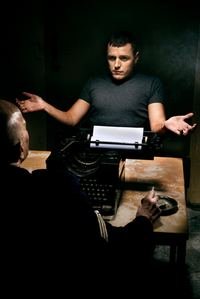 “Mr. Johnson, isn’t it true you hated Mr. Wilson?”
“Mr. Johnson, isn’t it true you hated Mr. Wilson?”
If Mr. Johnson says “yes” which is actually true, then he is seen as having “motive to have killed Mr. Wilson during the robbery. But just because you hate someone doesn’t make you guilty of murder. In fact, MOST people don’t like most other people and, in general, most people hate a LOT of different people.
So Mr. Johnson, lies and says, “That isn’t true.” The discussion in Mr. Johnson’s head is “Yes, you jerk, but I didn’t rob the place and I didn’t kill that guy. I WISH I would have killed him. Now he wants to know if I hate the bast…. and I have to tell him “no” so they don’t put me in jail. I’d love to tell them what a whacko that Wilson guy was.”
In our imaginary scenario, I bring this to every public or private conversation I have with anyone. I always consider that this is likely. And remember the scenario is…The guy is 100% innocent of a crime he almost wishes he would have committed!
Now I’m going to take you inside of my world of body language analysis.
Body Language Analysis
The content here is the President stating that he testified before the Grand Jury and was asked questions and answered truthfully to those questions no one should ever have to answer. No doubt about that.
But what is the man thinking about while he speaks?
Here the President is speaking what is known to be true statements.
In what has to be the most difficult speech a person would ever have to give, in those first 19 seconds he blinked 26 times.
That is fast. Very, very fast.
It is so fast the there are only three explanations that typically come to mind.
What Affects Eye Blinking
- Contacts are bugging the person.
- Massive amounts of anxiety.
- Lighting is somehow impacting the person.
Generally, people blink 8 – 10 times per 60 seconds.
Most “body language experts,” immediately translate these 26 blinks in 19 seconds as if the person is lying.
It COULD mean this, but it isn’t ipso facto.
From 0:24 to 0:54, there are 29 eye blinks. This is certainly slower than the first 19 seconds, though 1 per second is still very fast.
You can’t know what he is thinking, but what he is saying, the words being read from the teleprompter, tell you he did indeed have an inappropriate relationship with the intern.
From 0:54 to 1:14 The President indicates that he didn’t ask anyone to ever destroy evidence or lie about this experience. He says it was wrong and constitutes a lapse in judgement.
17 blinks. Even slower. You see anger in his face.
But for the moment, we observe only the eye blinks.
From 1:14 to 1:34 he talks about how he misled people and his regret.
30 blinks. These statements have by far the highest blink rate I’ve ever counted in 20 seconds. His verbal statements are true, as are all the statements in the first 1:34 of the speech.
You can watch the entire video, but it’s not necessary.
The key concept here is that “Eye Blinking” varies with content and emotions…whether someone is lying or NOT.
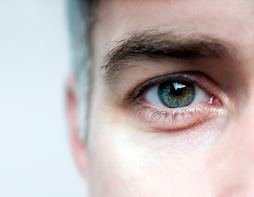 The most anxiety as measured by eye blinks was when speaking of misleading people and regret. (When he originally lied a high stakes lie.)
The most anxiety as measured by eye blinks was when speaking of misleading people and regret. (When he originally lied a high stakes lie.)
The least anxiety was when he was angry and discussed his not asking anyone to destroy evidence and his lapse in judgment.
Yet in all cases, in real time, he was telling the truth.
Again, I want to point out that this is not a personal indictment of the President. The price he paid was enormous and the deceptions he told had no impact on the country, the military, the economy, in contrast to the lies Nixon, Bush and Obama have told.
President Clinton was simply someone whose behavior I studied at a level that no human should probably study another human. Of all the living Presidents I’d most like to meet and have a drink with, Clinton would be my choice…and I would be fine if he’d slap me for having done the analysis over a decade ago in the first place.
Before going deeper into Eye Blinking, you should know that your personal biases cloud your judgment in what should be objective body language analysis.
I believe that in all real-time analyses of celebrities and political figures, I’ve been historically accurate in what I’ve reported.
Objectivity Matters
The track record is, in part, because I don’t do media appearances and offer analysis on individuals I have strong feelings about, positive or negative. This is why I chose not to discuss David Letterman’s situation a while back. Letterman has given me more laughter and, in return, I didn’t want to offer an opinion to the press.
Similarly, I haven’t been a fan of our last two Presidents, so I am hesitant to communicate much about either. I am biased.
Objectivity and impartiality matter a great deal in commenting on someone else’s life.
When I did the analysis of Clinton’s initial denial of the affair, I had no real opinion of the President. I basically viewed politics at the time as a time when blessedly no one was spending tax money. (All that would happen with Bush and Obama.)
By the time Clinton was out of office and had been punished mercilessly by the Republicans, I had grown to be disgusted with my political party and I had become embarrassed to call myself a Republican. I haven’t since.
Eye Blinking has been scientifically studied, and indeed has been correlated in certain situations with lying and anxiety.
What causes eye blinks to slow down?
Cognitive Demand
Cognitive Demand means when something makes you think really hard, your blink rate will slow down. It also means that when you are not in deep thought or calculation, your eye blink level will increase.
 It is unlikely that someone will blink a great deal when they are CONSTRUCTING a complex lie.
It is unlikely that someone will blink a great deal when they are CONSTRUCTING a complex lie.
Creating fiction requires a lot of thought. Eye blink rate reduces when creating fiction.
Now, once the lie is told, you can notice a burst of eye blinks.
Such a flurry of eye blinks occurs at 1:20 in the video you looked at indicated that anxiety or deception was likely to be high in the comments immediately preceding that.
Another flurry happens at 1:29 indicating high anxiety or deception about the preceding couple of seconds.
The final flurry in the time you and I looked at the video comes at 2:00. 8 blinks in 2 seconds.
I’ll let you go back and do your own analysis and draw your own conclusions. Remember there is a teleprompter running and what you THINK is causing the anxiety as preceding the flurries COULD just as easily be triggered anxiety by the content immediately to follow.
This is why speeches with only a camera in a room are very difficult to analyze in contrast to communication where others are giving verbal and nonverbal feedback.
Lying is a very cognitively demanding task!
When you lie (and you do a lot more than you can ever admit) you have to make stuff up out of thin air, you have to make that stuff make sense.
 It has to piece together logically like a puzzle so you can tell the story again in round two.
It has to piece together logically like a puzzle so you can tell the story again in round two.
You have to be certain that your story is being received as “plausible” by your listener.
At key points, your brain takes a mental rest from the construction.
That’s when you are likely to get the flurry if you are lying. …unless there is a teleprompter that can also trigger such a flurry.
By contrast, people who are telling the truth when “remembering” an event, tend to blink more during the remembered event.
So, to the casual observer or the typically touted body language “expert,” the “expert” will determine that the person who was telling a lie…was really generally telling the truth.
I’ve seen people accuse others of crimes who were later found to be 100% innocent. The body language of the accused signaled their guilt was a sure thing…to almost everyone.
Now you know what very few people know. Eye blinking IS a huge indicator of both truth and lying.
It’s a question of WHEN the person is blinking, at what rate and what level of construction or reconstruction is required.
Secrets of Reading
Body Language
Reading Body Language with Expert who Shares Free Insider Tips and Analysis of Body Language in the Media. Get The Scoop Here!
From: Kevin Hogan, Psy.D., Body Language Expert
Date: May 11, 2018
Do you wish there was an accurate way to know if someone is telling the truth?
Would you like to know whether someone likes you or not, even before they say a word?
Do you want to know anyone’s thoughts and feelings by reading their body language?
Do you want to subsconsciously influence anyone… without even saying a single word?
If you answered “yes” to any of the questions above, then this could be the most crucial message you’ll ever read in your life. Here’s why.
In just a few minutes from now, you could have the unique ability to easily read and interpret body language cues of anyone.
This means you could almost instantly know if they’re being honest or deceitful… if they like you or not… or whatever they might be thinking or feeling at the moment – simply by observing their actions and body movements! Amazing, isn’t it?
But that’s not all…
Since nonverbal communication is between 60 to 75% of the impact of a message, you could use the power of body language to become tremendously successful… in your career, business, relationships, love life, and anything else that involves interacting or communicating with people.
If the art of reading body language sounds unbelievable, let me assure you that it is based on sound scientific research and studies. It has been tested and proven to work; nothing is left to chance.
In this webpage, you’ll discover some useful facts and techniques about reading body language that you can start applying immediately to your own situations. I’ll also share with you – for free – my expert body language analysis of famous politicians and celebrities, using photographs the media has asked me to analyze.
So please make sure you read every word of this letter, because the body language secrets that can catapult you to the top of the success ladder is written here. I believe you’ll find the information in this webpage very helpful and applicable to many aspects of your life.
Why It’s Critical to Know What the Body is Saying
What people say could often be very different from what they’re thinking or feeling. It’s very easy to say something untrue or insincere, so we can never rely on words alone.
Fortunately, there’s a proven way to accurately decode people’s thoughts, emotions or mood – and that’s by reading their body language. People may lie, but their body silently and unconsciously speaks the truth.
Having the right knowledge in body language allows you to uncover what your friends, co-workers, spouse, customers or anyone else, may be hiding from you. You might even understand other people’s thoughts or feelings better than they do!
Let’s face it. Even if you trust someone with your life, you’ll never have peace of mind unless you know exactly what they’re feeling or thinking inside.
The most effective way to uncover hidden desires, thoughts, or emotions is by reading and interpreting body language correctly.
And guess what?
Your own body language signals can also influence what other people may think or feel about you. If you do it right, you will be liked and trusted. But if you send the wrong signals (even if you’re unaware of it) – your business, career, relationships, and even self-esteem may suffer.
For example, if you have a habit of touching your nose, people could perceive that as a sign of deception. You might simply have that habit even if you’re telling the truth, but people can’t tell the difference. They are unconsciously interpreting your gesture as untrustworthy and judging you based on your actions.
Why go through the trouble of being misinterpreted when you can avoid it? Understanding the meaning and uses of specific body gestures will allow you to change your approach and act only in ways that will result in maximum compliance.
Just imagine how much sales you’re losing if your body language communicates mistrust or offends your clients… without you being aware of it! But if you know how to use body language, you will be able to avoid sales pitfalls and convey body signals that make your customers say “yes!”
Body language is not only applicable in sales or business. You could also miss out on that important date or job opportunity… only because your body language is unconsciously sending negative signals. You don’t want that to happen, right?
That’s why if you want to skyrocket your sales… if you want to have a successful business or career… if you want to be successful in dating, your social life or relationships… as long as you communicate and interact with people regularly, then learning body language is a key component of your daily activities.
By the way, I understand that sometimes you might be feeling down. But that doesn’t mean other people should know, especially if your present mood could ruin a lifelong career or relationship. By knowing and using the right body language, you could purposely act in ways that will be appropriate to the circumstances.
Did you know? Men and women behave and respond to body movements in different ways. So it’s crucial for you to suit your body language depending on the gender of the person you meet, or you could damage a relationship or business without even knowing it.
If you think having this ability is mindblowing, you haven’t scratched the surface yet. When you recognize the true meaning of people’s gestures and movements (which could often be very different from what they say), your life changes in a lot of positive ways.
How Can Knowing Secrets of Body Language Greatly Enhance Your Life?
Having the ability to decode body language can have astonishing effects in almost every aspect of your life. By reading body language and using the right gestures, you’ll be able to:
- Save a lot of time by dealing only with the people you like or trust. By reading body language, you’ll quickly know the mood or personality of anyone… before they even say anything!
- Become a human lie detector. Almost anyone tells lies at one point or another, so it’s crucial for you to detect deception. Even people very close to us like our spouse, friends, or kids can sometimes lie… whether it’s a white lie or something that could hurt us. If you never wanted to be cheated or tricked again, then reading body language is the key.
- Find and date with someone who has the qualities you like. Know beforehand if your date is attracted to you or likes you, and then use the right body language and attraction techniques to impress and captivate them!
- Boost your career and relationships. Now you can make your boss, co-employees, and even strangers to like you through subtle body movements. You’ll be astonished at how easy it is to get a raise or promotion if you know the art of reading and using body language.
- Multiply your sales and sell to prospects who have the highest chances of buying from you. Detect in advance if you can negotiate a better price on a deal, and raise your chances of winning negotiations.
- Boost your self-confidence and be in control of any situation whenever you’re interacting with people. Connect with total strangers and get people to cooperate with you… in no time flat!
- Make a dazzling first impression, and instantly get liked or trusted on your first meeting.
- Be a master communicator. Most of the time, words are not enough. Your communication will be much more effective and understood if you accompany it with the right body language.
- Ace the job interview. Know how to properly express the body language of confidence and competence, and get a keen sense of how the interviewer is evaluating you.
- Avoid the costly hassles of hiring the wrong people. If you’re the interviewer, you’d easily spot the most capable applicant for any job!
- Read people’s minds and emotions. With this ability, you can do things which are only favorable to the situation and avoid any problems that may occur. You may even impress your friends with your mind-reading abilities!
- Establish authority, liking, trust or respect using simple body gestures.
- Become an outstanding public speaker. You’ll know when the audience is interested or bored, so you can adjust your speech to their present state. You could more easily persuade and inspire them if you combine your speech with the right gestures.
Are You Making These Mistakes In Body Language?
Studies indicate you have realistically closer to 4 seconds to make a good first impression on those you come in contact with. And this is used as a yardstick for all future communication by those whom you meet.
In the first four seconds, people will make judgments about you and tell themselves:
- I will (or will not) buy from this person.
- I will (or will not) like this person.
- I find this person kind (or not).
- I find this person intelligent (or not).
You can’t make a good first impression through your words alone. In fact, nonverbal communication is between 60 to 75% of the impact of a communication. But despite being the most important aspect, body language is also the most misunderstood and misinterpreted.
Every action – or even the smallest micro-action – communicates subconsciously to others, so people could like (or not like) you through your gestures… without even knowing exactly why.
You could be making the most wonderful compliments or praise to people, but it’s difficult to gain their trust or approval if your words contradict with your body language.
These body language photos will show you some of the basic and advanced techniques used to interpret body language. This girl is flirting with you. “But her arms are crossed, that’s defensive,” some might say. They are wrong. Head tilt to her left, hard time not grinning too big, while looking right at you. She likes you.
Flirting and sexual body language is something you can quickly spot in a woman’s body language – as well as a man’s – in both business and personal context.
Body language revealing the liar is easily identified in both business and personal context when you know how to properly interpret the signs. I’ll show you this later.
 Whether you want to learn the body language of love, dating or closing the deal, welcome!The analysis I’m going to give you as part of this preview includes both “liking” and deception judgments. It is fairly complex to analyze human behavior in snapshots in time.
Whether you want to learn the body language of love, dating or closing the deal, welcome!The analysis I’m going to give you as part of this preview includes both “liking” and deception judgments. It is fairly complex to analyze human behavior in snapshots in time.
See this guy. By looking at him, that smirk should mean he’s being perceived poorly and he’s fighting for his life. But no, check out the over the shoulder look of the first girl. Women inspect over their shoulders with curiosity…until that split second where liking or not occurs. These two will connect…..BELOW…I made judgments on the relationships of the couples based solely upon these photographs and the context in which they were taken. (This is as little as you have to go on with most media. It IS a challenge.)
In this preview, my goal for you is to become aware of a few subtle cues that you are going to begin picking up from now on. Instead of telling you each little signal in a boring, clinical way, I’m going to let you have some fun and invest just a few minutes into being a body language expert with me.
If you look closely, you will learn a great deal today about the nuances of nonverbal communication.
Photos appear under license agreement with PRPhotos.
What Can You Interpret About a Person’s
Body Language From a Photograph?
Example 1 – Barack Obama. Barak Obama certainly is known for his striking IMAGE. Notice the intensity on his face. The cheek bones. The strength of his jaw. The back of a soldier. This is a POWERFUL IMAGE that won an election. | 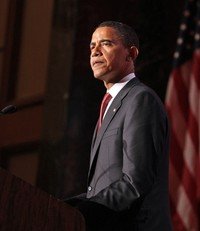 |
 | Example 2 – Carmen Electra. Whoa! Look at all the space between these two. It’s like they are afraid to touch one another – the other is infected with….something. Notice how they keep their most private parts as far away from each other as possible. Considering the fact that these two split up after being “inseparable” in photos during their all too brief marriage, it seems at this point things must have been a bit shaky. Most happy couples are alot more giving and generous with their body language. |
Example 3 – Body Language of Nicky Hilton with ex-boyfriend Brian Connolly. Question: “Kevin, will these two last?” Answer…observe… Notice Nicky’s body language. The knee elevated against her boyfriend’s right leg. Her left leg supporting her entire body. The expressionless smile as she poses for the other photographer. One clue I always look for is, “Where is the cell phone.” Pocket or hand. Answer: Hand. No, this will not last. |  |
 | Example 4 – Tom Arnold and Shelby Roos. Tom, one of my favorite funny guys is holding his girlfriend so tightly, she is like the caged bird that must fly away. Notice you can see the white in Tom’s fingers. Check out the facial color. Observe the closeness of his head to Shelby in contrast to where it would be if he were standing straight. This is a classic photo sequence of “boy ecstatic to be with this girl.” Unfortunately I had to report the relationship would not last. |
Example 5 – Bruce Springsteen and Patti Scialfa Bruce Springsteen and Patti for the longest time were like yin and yang. Almost all photo’s of these two together before 2010 revealed a mirror image of each other and this is no exception. Even when they are turning their legs/feet are the same! Then notice how similar their hands are positioned and of course his and hers sun glasses. There’s more in the program about these guys and this sequence of photos; but when two people mirror each other this perfectly, they stay married longer before divorcing. |  |
Please register below to get instant access: * Your Email is completely confidential. I will NEVER share it with anyone and you can unsubscribe at anytime. I hate spam as much as you do! |
Why Does the Media Refer to Me as “The Nation’s Leading Body Language Expert?”
Hi, my name is Kevin Hogan. I’m a body language expert, social psychologist, and the author of 19 books, including “The Psychology of Persuasion” which has sold over a million copies worldwide.
I’m an international motivational speaker and have given specialized training to employees of numerous Fortune 500 Companies. You may have heard of Boeing, Microsoft, Starbucks, Meespierson, Auntie Anne’s, Cargill, Pillsbury, Mutual of Omaha Carlson Companies, Fortis, Great Clips, the State of Minnesota, 3M, The United States Postal Service and many others.
I’ve shared my expertise about body language, persuasion and influence with all four major television networks and the nation’s largest newspapers. Other media that have asked for my help include the New York Times, the BBC, Fox Television and dozens of popular magazines including Redbook, Success!, Selling Power, Cosmopolitan, Woman’s World, Mademoiselle, First for Women, Psychologie Netherlands and Wprost.
The media has concluded that I’m the go to guy for everything related to reading the body language of a person. In fact, the New York Post asked me in 1998 if US President Bill Clinton was being truthful about whether he had a relationship with Monica Lewinsky. I found one very specific piece of body language – that no one else picked up on – indicating that he indeed have an affair. I was the first person in the nation to make that public.
Soon after, I analyzed the nonverbal communication of Hilary Clinton, Judge Ken Starr, Starr’s Staff, and numerous other figures in the news story of the year.
I accurately predicted the 2000 and 2004 elections when everyone else in the media was wrong, because I know how people will react to a specific individual’s body language. This is why I knew Bush would win the elections both times. Not because of what he did right, but because of what Gore and Kerry unwittingly did wrong….really wrong – with their body language.
I was well aware of how American CITIZENS would respond and react to what they saw in the debates and sound bites. The body language of Gore and Kerry was offputting to the undecided voters. In both cases, I told the BBC what would happen.
In fact, I predicted the US election in 2000 would be decided by less than 50,000 votes, an almost statistical impossibility. When it came down to ONE VOTE, everyone was shocked, except me…I had made it public days before the election with Bush and Gore, and then again with Kerry and Bush.
|
What If You Can Learn All the Secrets of Reading and Interpreting Body Language Like an Expert?
Being a body language expert has given me an overpowering edge in life. In fact, I never would have become wealthy if I couldn’t read the body language of people I do business with. It’s a key component to my success.
My ability to instantly recognize hesitation, liking, deception and honesty has made all the difference in the world. If you show me the video of someone today and a video of that same person prior to some terrible event (a crime for example), I can often tell if that person is innocent or guilty with uncanny accuracy.
I‘m also able to send covert messages (through my body movements and gestures) that generate liking from other people that almost no one knows how to do.
And now, you have the opportunity to discover my deepest secrets so you can use it to be tremendously successful in life.
I tell you all these “accomplishments,” only to share with you that I’ve taught thousands of others and I can show you how to read people’s body language and apply this skill set to achieve great results in life. As a result, I’ve gained the trust and respect of the most reputable people and media outlets in the world.
And now, you can leverage from my knowledge and years of experience to be a specialist on nonverbal communication… in no time flat!
I’ve been educated to know what really works, and have gone through 20 years of meticulous scientific research, studies, and practice.
So if you want to shave many years off your learning curve, start on the right track and have the ability to accurately read body language like a pro, then you can count on me to give you the best step-by-step training towards body language mastery.
|


